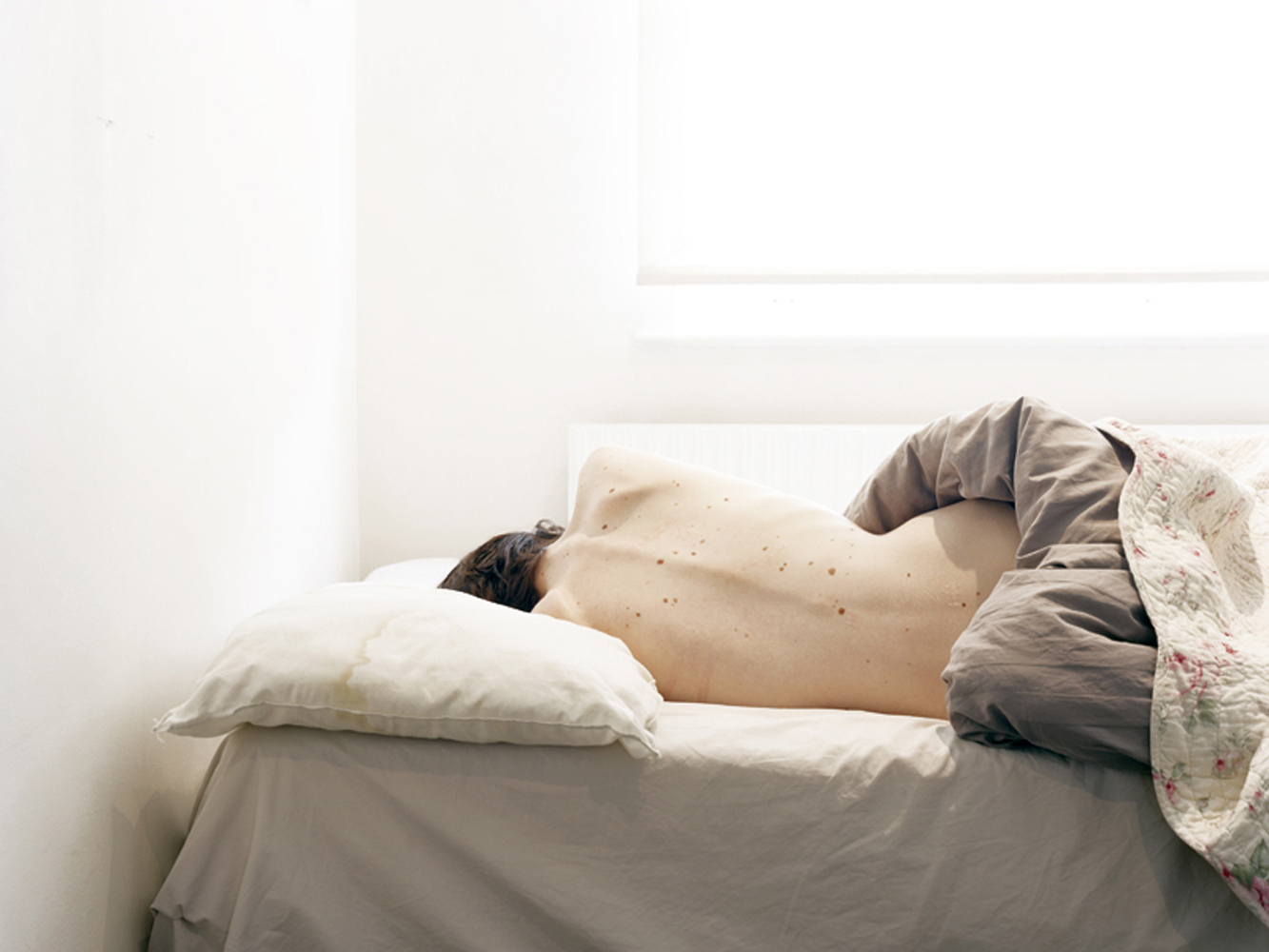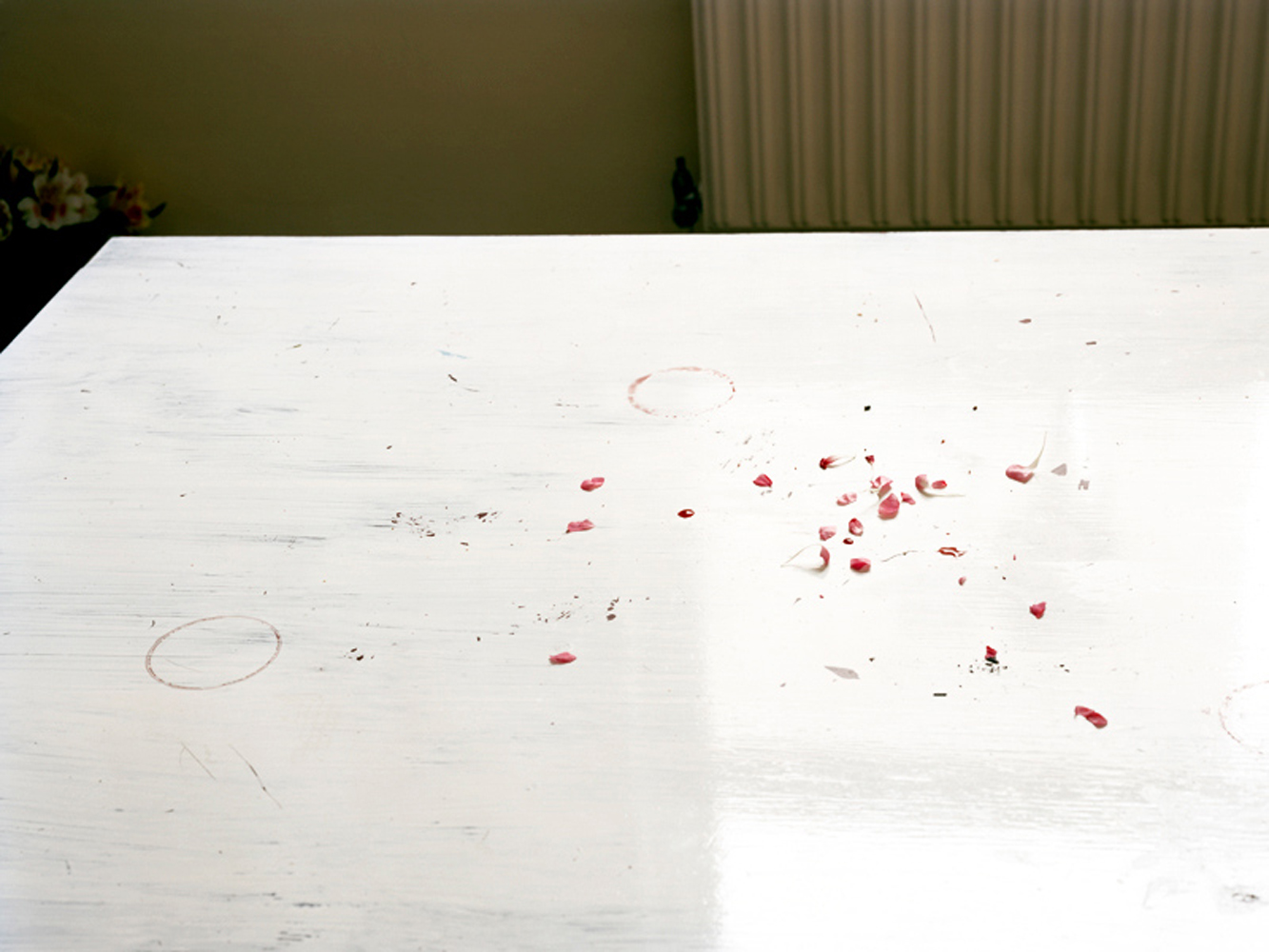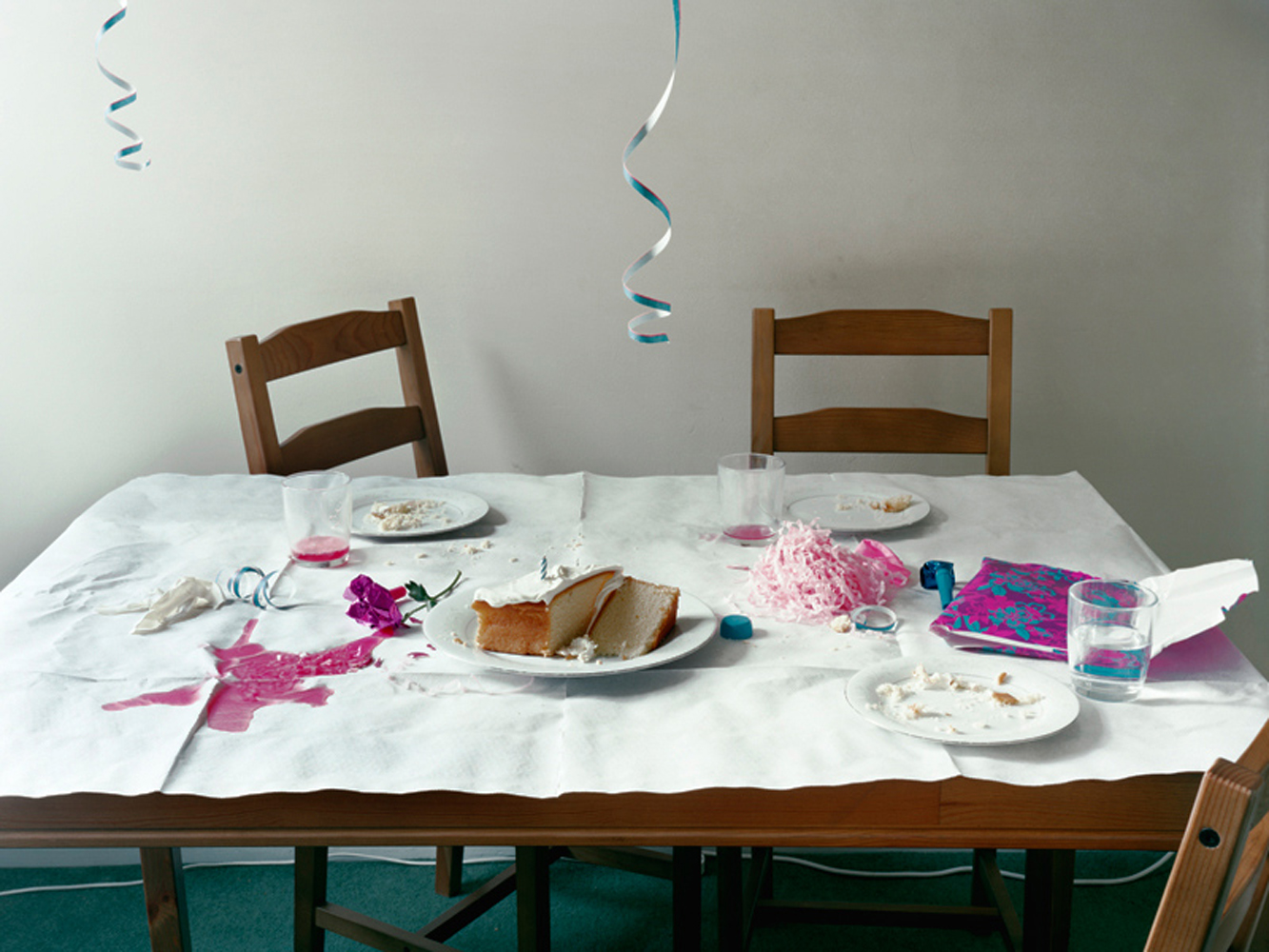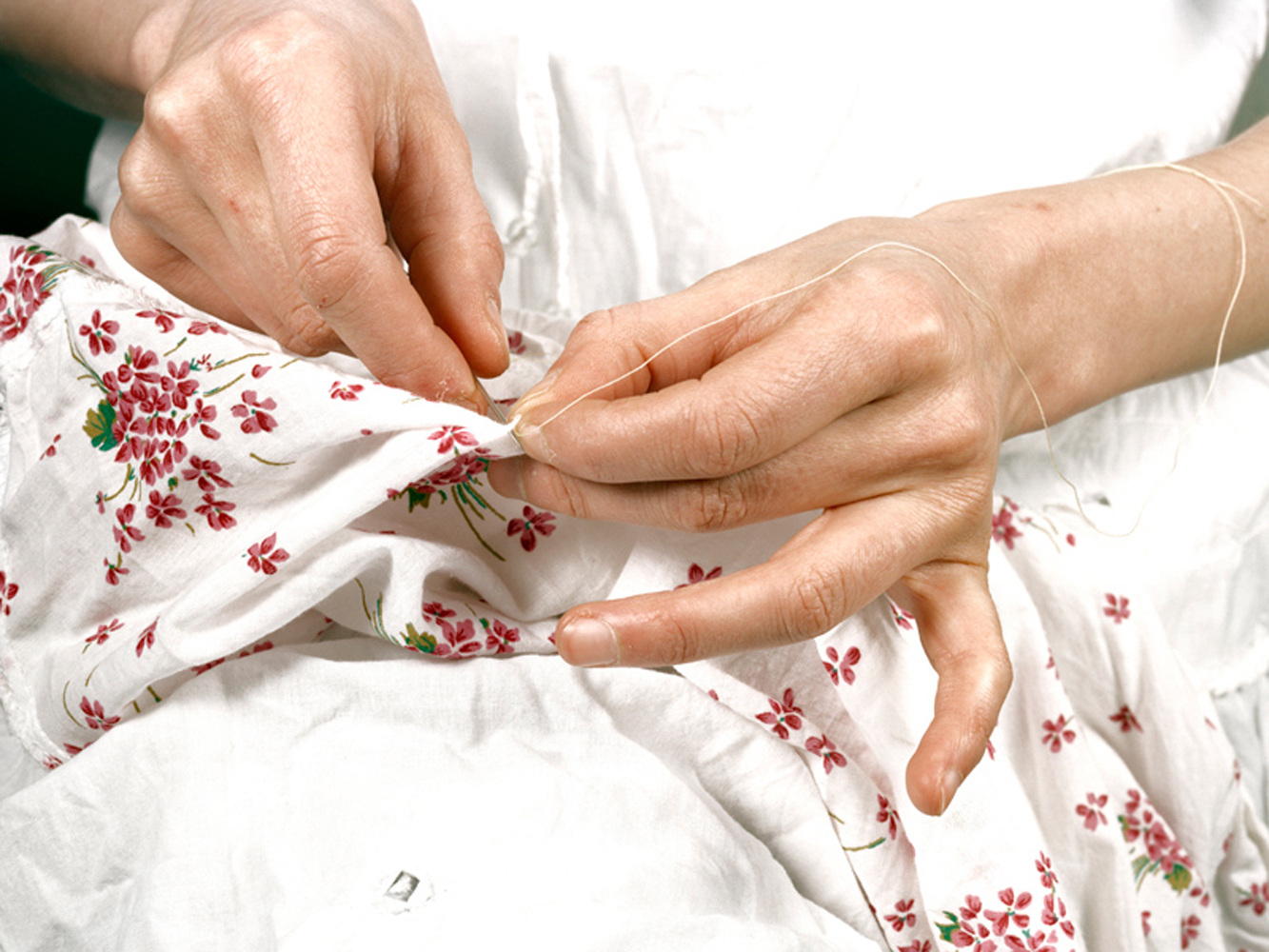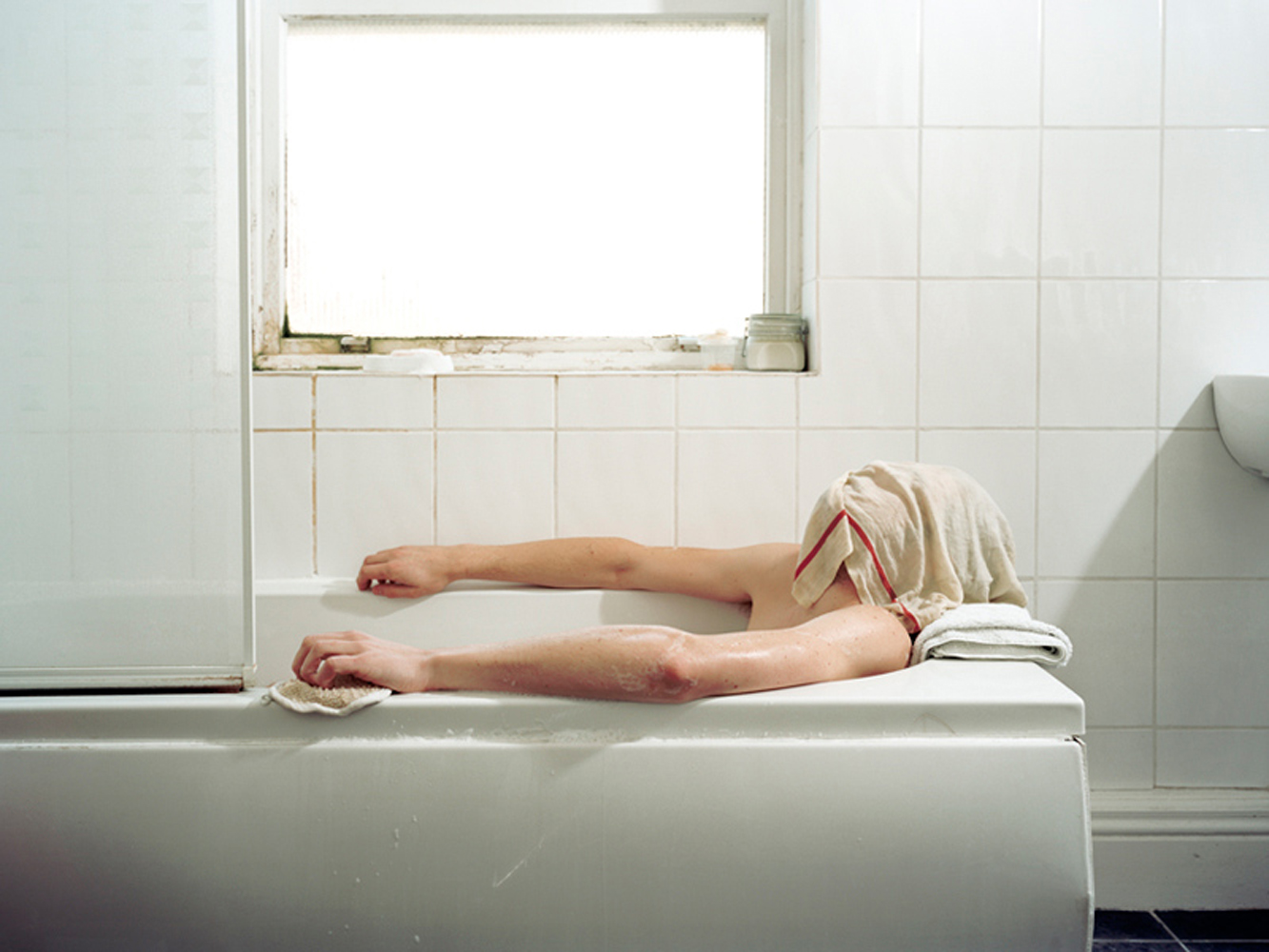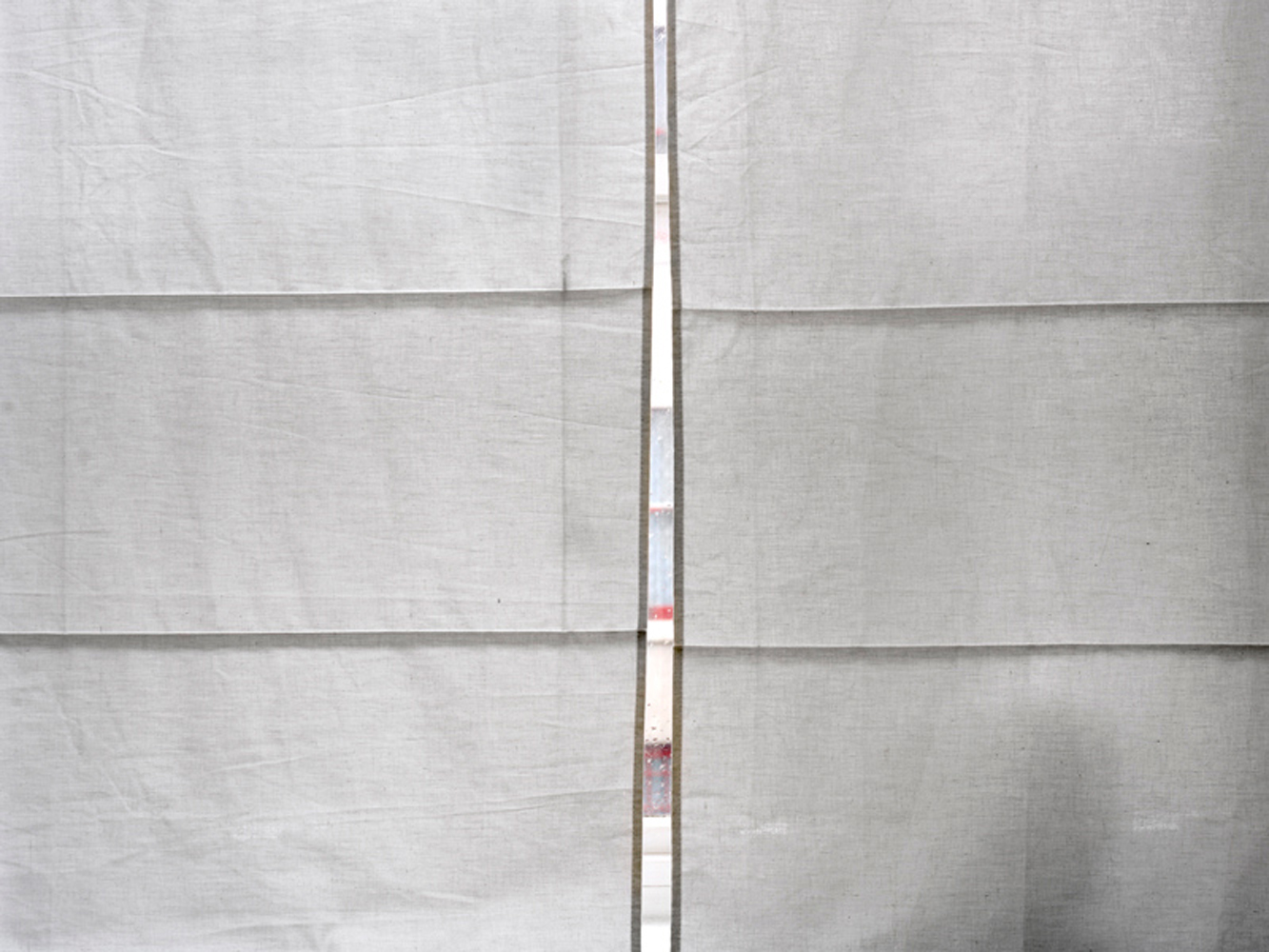The series Plucked is an investigation into the duality of the home, urban alienation, social segregation and human relationships. This duality of the home extends further, adding layers to the series, incorporating the ethics of both social documentary and staged photography, as well as the possible cognitive dissonant experience of the viewer. This dissonance was built around notions of ambiguity and the uncanny.
The home is often known to be a safe space where one can be private and intimate. The home has a sentiment of security that is built around the fact that we can seclude ourselves, distancing oneself from the interference and surveillance of others. It is with this point that its most problematic duality is made evident. The home is a harbourer of some of humanities gravest crimes. These crimes occur behind closed doors, including physical, sexual and psychological abuse.
The element of time and death is also present in the repetition of flowers throughout the series. Here flowers act as a subtle metaphor concerning the duality of life and death, of which are inseparable through time, not unlike photography itself. The act of plucking/picking flowers is death and once the plucked flower is severed from its life force, it is subject to a slow, often beautiful, process of dying. This dialogue with death has the ability to create notions of the uncanny. By depicting something that is familiar, yet strange, or appealing and repulsive at the same time is often regarded as a signifier of the depiction of the uncanny and raises contradictory beliefs (cognitions) for the viewer, encouraging the viewer to create his/her own opinion, which is hopefully based on the emotion that the photograph offers the viewer.
The images are talking about the everyday with a calm and beautiful surface, but that, on closer inspection, raises question about the apparent peaceful depiction, juxtaposing the viewer’s emotional response to the photographs with a subtler sinister undercurrent. When this emotion is strong enough to allow the viewer to travel back through their personal history, to where a similar emotion was encountered, the viewer is removed from the physical object, that is the photograph, and the situation it is depicting. This journey is a personal reflection that considers social truth. This is emphasised by the deliberate open-ended narratives and cognitive duality of the series, encouraging a subjective journey through the work rather than a dictated reading. The subjectivity is also important in recognising scenarios through the viewer’s experience of the everyday. This is also in dialogue with the viewer’s memory vault of images derived from painting, cinema and TV and helps the viewer in understanding a visual, gestural language. It is related to a subliminal aesthetic pleasure that is not, as I understand it, dependent on authenticity, hence verifying the staged documentary photograph as a relevant approach concerning social understanding and investigation. By plucking specific moments of everyday narrative my work is confronting the way in which social truth should be depicted.

